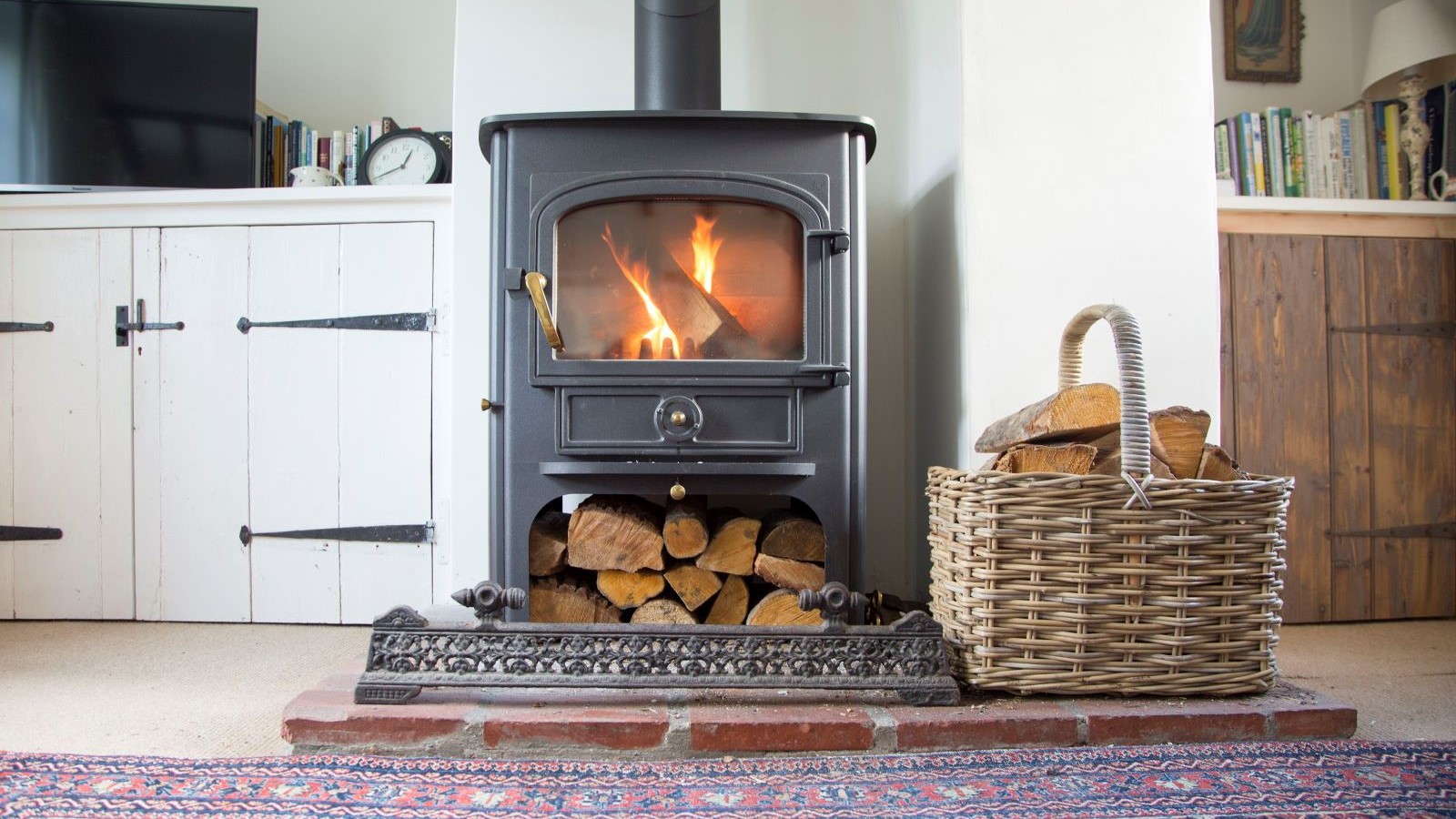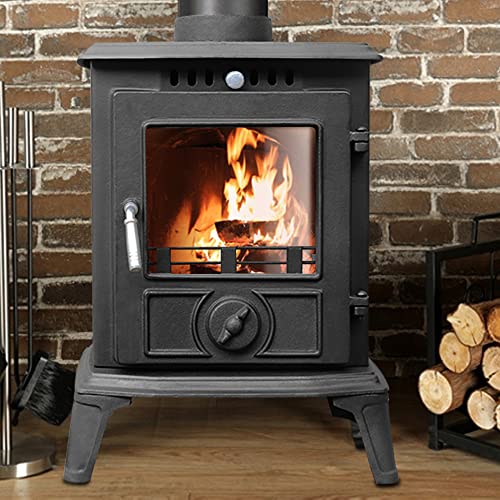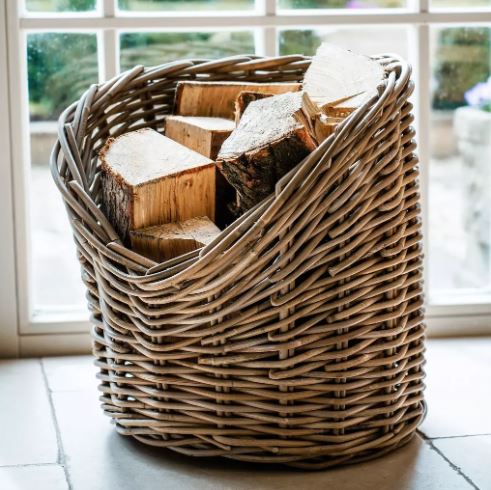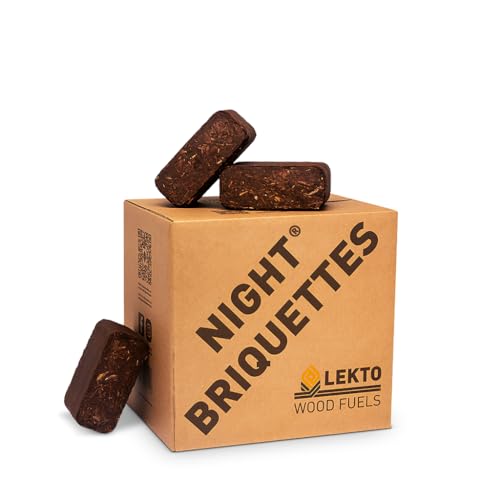Wood burner vents open or closed? We explain how to use log burner vents
These air controls are key to mastering your wood-burning stove

As a wood-burning stove owner, getting to know my log burner’s air vents has been crucial to lighting a good fire and burning logs efficiently.
Learning how to use these controls has made the difference between struggling to light my firewood (or burning them too quickly) and enjoying a steady, comfortable log fire.
To help you master the air vents on your own log burner, we spoke to experts from the Stove Industry Association (SIA) and Morsø, the world-renowned stove manufacturer.
Read on for airtight guidance on wood burner vents – what are they, how do they work, and when should you have them open or closed?
What are log burner vents?
A log burner vent is a control that can be closed or opened to various extents, in order to permit different levels of airflow into a stove.
If all of the vents on a wood-burning stove are closed, airflow is restricted; whereas if the vents are all fully opened, the supply of air is maximised, which promotes combustion.
“In order to burn, fuel needs the oxygen that’s contained in air – and a stove needs vents to introduce that air in a controlled fashion,” says James Verlaque, Technical Manager at the Stove Industry Association (SIA).

The Stove Industry Association is the trade body for the UK stove sector. With over 20 years’ experience in the combustion industry, James Verlauque oversees technical matters and functions as the SIA’s Technical Manager.
Shop log burning stoves and accessories

With an overall size of 560 x 440 x 340mm, this cast iron multifuel stove has a heat output of 5kW
What do log burner vents do?
All wood-burner vents regulate airflow into a stove. However, most log burners have two or three vents, each of which has a distinct role.
- The primary vent is at the bottom of the stove. It is the main source of airflow to the combustion box, providing oxygen to the fuel from underneath
- The secondary vent introduces an additional airflow from above the fire bed, for increased combustion
- Some log burners have a tertiary vent which adds to the action of the secondary vent
“A modern, eco-designed stove controls the amount of air that comes into the combustion box in different ways,” says the SIA’s James Verlaque.
“Some appliances will take secondary air, heat it and send it down the front of the glass door to clean it – which is called an ‘air wash’ action. Others take secondary and tertiary air and superheat it, producing a swirling effect.”
Models of wood burning stove differ in their controls and airflow systems, so you’ll need to check the manufacturer’s instructions to pinpoint your stove’s capabilities.
“Vents vary in number, placement, and control across stove models,” says Declan Kingsley-Walsh, managing director of the stove brand Morsø.
“Modern stoves often include tertiary air vents for cleaner burns, while older models rely on primary and secondary air controls. Some non-standard vents, like thermostatic controls, adjust airflow automatically, improving efficiency,” he adds.

Declan Kingsley-Walsh has been the managing director at Morsø UK and Ireland for over nine years. Known for his meticulous attention to detail, Declan places a high value on maintaining the quality and craftsmanship that define Morsø's offerings.
How to use a wood burner’s vents
Your wood burner’s vents can be used to control combustion before, during and after you light your fuel.
“Vents should be fully opened when starting a fire to maximise oxygen flow for ignition,” says Morsø’s Declan Walsh. "Opening them wide is also helpful when adding new wood or when more heat output is needed. This ensures quick ignition and helps clear smoke from the firebox.”
When you want to dampen the rate of combustion, the opposite applies.
“Vents should be closed or nearly closed once the fire is well-established, to control the burn rate and conserve fuel,” says Declan Walsh. “This slows down the fire, making it burn more efficiently over time. It’s also crucial for maintaining overnight burns without consuming wood too quickly.”
Closing the vents on your wood burner will also help when the time comes to let your wood fire die down.
With time and practice, you’ll get a feel for how to control combustion using your wood burner’s vents – but do try to keep the manufacturer’s instructions in mind.
“If you’ve inherited a stove, there’s a good chance you can find the instruction manual online,” says Jack Verlaque.“Meanwhile, if your stove is new, your installer can talk you through its operation and give you great advice. Chimney sweeps also have fantastic practical knowhow, so you can ask for tips during your annual sweep.”
If you are soon going to be installing a wood burner, make sure to check out our article on wood burning stove installation costs as well as our log burner ideas for inspiration on the design and positioning of a log burner in your home.
Get the Homebuilding & Renovating Newsletter
Bring your dream home to life with expert advice, how to guides and design inspiration. Sign up for our newsletter and get two free tickets to a Homebuilding & Renovating Show near you.
Pete Wise is a freelance writer and keen DIYer from Leeds. Pete's tool reviews have featured in titles including Homebuilding & Renovating, Ideal Home and The Independent. He also writes features and news articles for publications such as The Guardian, BBC Good Food and T3. When he isn't busy writing, Pete can often be found at libraries, pubs and live music venues. He finds tile-cutting strangely zen.



